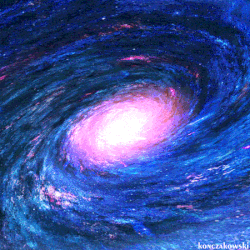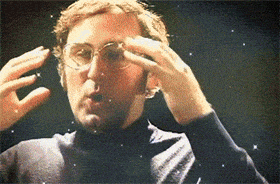US President Joe Biden and NASA chief Bill Nelson have revealed the first image from NASA's new space telescope, the deepest view of the cosmos ever captured.
Look back on all the updates as they happened in our blog.
Key events
Live updates
By Jessica Riga
It's time for the space party to wind down...
If you're just joining us now, the deepest view of the cosmos ever captured has been released.
We're going to wrap up here, but we'll be back tomorrow!
NASA is set to release more images on Wednesday, so come hang out with us tomorrow so we can geek out together.
We'll also be joined by some experts so you can hang out and throw any questions their way.
For now, thank you for joining us this morning! It was a roller coaster ride (the hold music!) but, as some of you wrote in, so worth it once we saw that gorgeous image from the James Webb Space Telescope!
Enjoy the rest of your Tuesday in our universe, and we'll catch you tomorrow.

By Jessica Riga
NASA space telescope's first cosmic view goes deeper than ever before
The first "deep field" image from the $13 billion James Webb Space Telescope is the farthest humanity has ever seen in both time and distance, closer to the dawn of time and the edge of the universe.
Here's Dr Rebecca Allen, an astronomer at Swinburne University of Technology, breaking down why it's such a big deal.
By Jessica Riga
Are the colours from the image from the actual telescope?
Are the colours in the image from the actual telescope? Or were they added in post-processing and derived from other data? I can't find anything to tell me
- Steph
I've asked science journalist Genelle Weule to shed some light on this question!
They're not artificial colours, but they're infrared colours, representing different colours in the objects as if we had infrared eyes.
They are not true optical but sometimes, depending on the epoch of the universe, what we see in infrared can match what we see in optical wavelengths.
By Jessica Riga
Experts say this is just the start of improving our knowledge of the cosmos
Dr Rebecca Allen, an astronomer at Swinburne University of Technology, says this is just the start of what we'll learn thanks to the advanced technology of the James Webb Space Telescope.
"I'll be honest, when they were doing the press release, I was like 'just get to the picture'," she told ABC News.
"But even in this teeny tiny little element like you said, we're seeing these gorgeous streaks from the clusters gravity in detail like never before.
"So just the amount of science that we can get from something that's literally the size of a grain of sand on the sky — that tells you just how deep we're getting back into time.
"It's just a rich image, because the cluster, the physics there, we're going to get to learn about dark matter, we're going to get to learn about galaxy evolution. And so, there's so much that's just packed into one tiny element.
"So you imagine, as JWST looks at different parts of the sky, that is just going to, in an exponential scale, improve our knowledge of the cosmos."
By Jessica Riga
Is it possible we're looking at galaxies that don't even exist anymore?
Because the light has travelled to us over a long period of time, is it the case that some of these galaxies might not exist any more? Or might look very different now to what we're seeing, considering this has taken so long for the light to get to us?
Dr Rebecca Allen is an astronomer at Swinburne University of Technology. She just spoke to Joe O'Brien on ABC News and says that question is pretty spot on.
"So what we're seeing, and especially with this galaxy here in the bottom centre that looks like a red streak, that is probably a very distant galaxy that's very dusty and forming a lot of stars.
"We're seeing its light as it would have been probably when the universe was only a few billion years old. And so, that's incredible, because now it might look much like our Milky Way galaxy does, when it's formed a lot of its stars."
By Jessica Riga
Aussie astronomers react to the James Webb images
As I said, the James Webb Space Telescope is now going to embark on a competitively selection list of missions.
These astronomers are among around 40 Australian researchers who actually have projects booked with the telescope, so they're pumped at today's news.
Here's a bit of what they had to say, and what they're hoping to discover with the telescope.
Much of the Webb data is flowing back to Earth through Tidbinbilla, and some comes from an instrument designed by Peter Tuthill at the University of Sydney.
"This is a day I have been looking forward to for a big part of my career. Everything about the Webb is so over-the-top audacious — from the titanic articulated mirror down to its orbit out in the cold voids of interplanetary space."
"This entire huge, complicated machine flew out and everything seems to have unfolded and deployed like clockwork."
Benjamin Pope from the University of Queensland says: "I used Hubble to find brown dwarfs – halfway between suns and planets. Now we can look for much smaller planets with Webb to help us understand how Earth and the Solar System formed."
Christophe Pinte from Monash University in Melbourne says he hopes to see "baby planets being born."
By Jessica Riga
What's next for the James Webb Space Telescope?
As we know, NASA is going to reveal a few more images captured by their James Webb Space Telescope tomorrow.
But where does this fine piece of technology go from here?
According to Reuters, the highly anticipated release of its first imagery follows six months of remotely unfurling Webb's various components, aligning its mirrors and calibrating instruments.
With Webb now finely tuned and fully focused, scientists will embark on a competitively selected list of missions exploring the evolution of galaxies, the life cycles of stars, the atmospheres of distant exoplanets and the moons of our outer solar system.
Built to view its subjects chiefly in the infrared spectrum, Webb is about 100 times more sensitive than its 30-year-old predecessor, the Hubble Space Telescope, which operates mainly at optical and ultraviolet wavelengths.
By Jessica Riga
'Welcome to a new era of astronomy'
Here's another comparison between the Hubble and James Webb telescopes.
By Jessica Riga
'Like Christmas in July'
"It's really striking," astrophysicist Robin Cook from the University of Western Australia has told ABC Science.
"It's almost the closest thing astronomers are getting to Christmas in July."
By Jessica Riga
It's truly mind-blowing
I've always been fascinated by the idea that looking into space is looking back in time, because of the speed of light. But if what we're seeing in this image is up to 13 billion years in the past, what's happening there now? Mind explosion!!
- My brain hurts

By Jessica Riga
More comparisons, because they're just fascinating
Another enthusiastic astronomer, Kevin Hainline, has pulled together this comparison between the humble Hubble Space Telescope and the new James Webb Space Telescope.
By Jessica Riga
'Almost every object is a distant galaxy'
Professor Cathryn Trott is from the International Centre for Radio Astronomy Research at Curtin University, and ARC ASTRO 3D Centre of Excellence.
She says the image "harnesses the combined power of the James Webb Space Telescope and Einstein's General Relativity, boosting and warping the weak light from these early galaxies through the focusing caused by the cluster of galaxies between us and the early Universe.
"The cluster of galaxies acts like the lens in your glasses, focusing the light from the earliest galaxies in the Universe. The lens distorts and magnifies their light, allowing us to see fine details of these infant galaxies where they would normally be too faint.
"For the first time, we can see the details of these earliest galaxies, harbouring the first generations of stars to have ever formed in the Universe. These galaxies formed in a mostly dark universe, filled with neutral hydrogen gas, and very different to the cosmos we see today."
"This image captures the starlight from the earliest objects to have formed in the first few hundred million years after the Big Bang. This starlight is more than 13 billion years old, focussed toward JWST by the incredible bending power of a massive cluster of younger galaxies.
"Combined with the future power of the Square Kilometre Array, the world's largest radiotelescope, being built in Western Australia, which traces the hydrogen gas that fills the space between these infant galaxies, we can fully understand this critical time of the very young universe."
By Jessica Riga
Talk about a glow up
Are there any images from Hubble of the same region of space for comparison?
- John doe.
There actually is, John!
NASA will most likely release an official comparison in the future, but for now some space enthusiast have done the work for them.
By Jessica Riga
Anyone else just been zooming in on all its glory?
Let's go back to TEAM SPACE with ABC Science Editor Jonathan Webb.
"I think the galaxies in the 4.6bn-light-year distant SMACS 0723 cluster are what you can see as fairly clear, bright, white-yellow features (yellow lines) — they're effectively slightly overexposed because the team was trying to get clear images of things that are further away ... like the beautifully detailed, tiny galaxies you can see if you zoom right in, many of them twisted out of shape because of the gravitational lensing of light by SMACS 0723."
Okay but if we REALLY zoom in, some of these details are pretty mind-blowing!
By Jessica Riga
The image is so clear because the James Webb telescope is HUGE
Astronomer Chris Lintott has explained why today's image is so crisp.
By Jessica Riga
Missed the presentation? Catch up here
Is there some way to watch Biden’s speech again?
- Pip
Hi Pip, there sure is.
You can rewatch the presenation here on the ABC News YouTube channel.
By Jessica Riga
'I've zoomed in and I'm blown away': More thoughts from you
I was quite impressed when I first saw the image, but now that I've zoomed in and seen the detail I am simply blown away!! The sheer number of galaxies is incredible and the detail is amazing! This is a true cosmic time machine!!
- Mike
Agreed, Mike. It's stunning!
By Jessica Riga
When will we get more images from the telescope?
Do we know when we'll get the next photo?
- Tara
Tomorrow, Tara!
Three more full-colour images will be released at 12:30am AEST on Wednesday.
By Jessica Riga
Our first impression on the first image
Here's ABC Science Editor Jonathan Webb with his initial thoughts:
"It might look like a square full of stars - but nearly all the points of light in this shot aren't stars. They are entire galaxies, billions of years away from our own Milky Way. This is the sharpest and most distant close-up of deep space that we've ever seen."
By Jessica Riga
The first image from NASA's new telescope was taken over 12.5 hours
This deep field, taken by Webb’s Near-Infrared Camera (NIRCam), is a composite made from images at different wavelengths, totaling 12.5 hours – achieving depths at infrared wavelengths beyond the Hubble Space Telescope’s deepest fields, which took weeks, NASA says.
Robin Cook from UWA says it's clear the image was taken over many hours "because there is so much detail."







